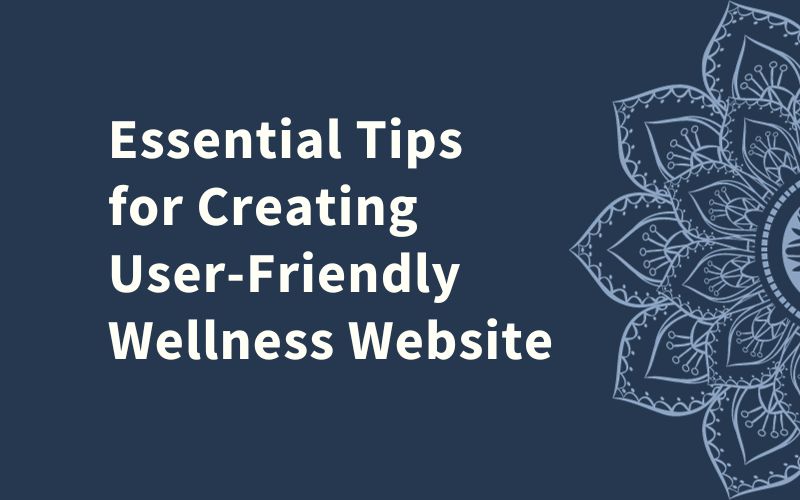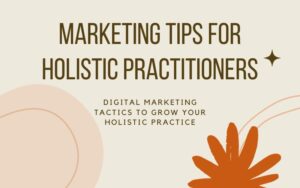In today’s digital age, having a user-friendly and trustworthy website is crucial for wellness practitioners to attract and engage with their target audience. A well-designed website not only enhances your online presence but also establishes credibility and builds trust with potential clients. In this comprehensive guide, we will explore the essential tips and strategies for creating a user-friendly wellness website that effectively showcases your unique value proposition and drives business growth.
Why a User-Friendly Wellness Website Matters
A user-friendly wellness website serves as a powerful tool to connect with your target audience, educate them about your services, and ultimately convert them into loyal clients. Here are some key reasons why investing in a user-friendly website is essential for wellness practitioners:
Establish Credibility
A professionally designed website instills trust and confidence in potential clients. It showcases your expertise, certifications, and testimonials, highlighting your credibility as a wellness practitioner.
Enhance Accessibility
A user-friendly website ensures that potential clients can easily navigate and find the information they need. It provides convenient access to vital details such as services offered, contact information, and appointment booking options.
Educate and Engage Patients
Your website serves as a platform to educate clients about your wellness philosophy, treatment approaches, and the benefits of your services. Engaging content, such as blog posts, videos, and downloadable resources, can help establish you as an authority in your field and foster a sense of trust and connection.
Drive Business Growth
A user-friendly website attracts more visitors, increases engagement, and ultimately drives business growth. By optimizing your website for search engines and incorporating effective marketing strategies, you can generate leads and convert them into paying clients.
Now that you understand the importance of a user-friendly wellness website, let’s explore some practical tips to help you create a website that will help you generate more traffic and grow your holistic practice.
1. Define Your Unique Value Proposition
Before diving into the design and development of your website, it is crucial to define your unique value proposition. What sets you apart from other wellness practitioners? What is your unique approach to wellness? By clearly articulating your unique selling points, you can differentiate yourself in the market and attract your ideal clients. Take the time to reflect on your strengths, consult with colleagues and clients, and identify the aspects of your practice that resonate most with your target audience.
2. Plan Your Website Structure
An organized and intuitive website structure is essential for providing a seamless user experience. Plan your website structure by defining clear navigation menus, logical categories, and relevant subpages. Consider the information and services you want to showcase and ensure they are easily accessible to visitors. Aim for a clean and uncluttered design, avoiding excessive text or overwhelming visuals. Your website should be aesthetically pleasing, easy to navigate, and mobile-responsive.
3. Develop Engaging and Informative Content
Compelling content is the backbone of any successful website. Create engaging and informative content that educates your audience about wellness topics, showcases your expertise, and addresses their pain points. Incorporate blog posts, articles, videos, and downloadable resources to provide valuable insights and establish yourself as a trusted resource. Use a conversational tone and avoid jargon to ensure your content is accessible to a wide range of audiences.
4. Optimize Your Website for Search Engines
To increase your website’s visibility and attract organic traffic, it is crucial to optimize it for search engines. Start by conducting keyword research to identify the terms and phrases your target audience is searching for. Incorporate these keywords naturally throughout your website content, including in headings, subheadings, and meta tags. Focus on local SEO if you primarily serve a specific geographical area. Additionally, optimize your website’s loading speed, mobile responsiveness, and user experience to improve its search engine ranking.
5. Incorporate Clear Call-to-Actions
A clear and compelling call-to-action (CTA) prompts visitors to take the desired action, whether it’s booking an appointment, signing up for a newsletter, or contacting you for more information. Place your CTAs strategically throughout your website, ensuring they stand out and are easy to find. Use action-oriented language and create a sense of urgency to encourage visitors to take immediate action.
6. Leverage Social Proof
Social proof is a powerful tool for building trust and credibility. Display testimonials, reviews, and case studies on your website to showcase the positive experiences of your past clients. Encourage satisfied clients to leave reviews on external platforms, such as Google My Business or Yelp. Additionally, consider displaying any awards, certifications, or affiliations that demonstrate your expertise and commitment to quality.
7. Ensure Mobile Responsiveness
With the increasing use of mobile devices, it is crucial to ensure that your website is fully optimized for mobile responsiveness. Test your website on different devices and screen sizes to ensure it displays correctly and functions seamlessly. A mobile-friendly website not only enhances the user experience but also improves your search engine ranking, as Google prioritizes mobile-responsive websites in search results.
8. Prioritize Website Security
Website security is paramount, especially when dealing with sensitive client information. Utilize SSL certificates to encrypt data transmissions and protect user privacy. Implement secure payment gateways if you offer online transactions. Regularly update your website’s plugins, themes, and CMS to ensure they are running on the latest versions and are protected against potential vulnerabilities. Display trust seals and privacy policies to assure visitors that their information is safe and secure.
9. Integrate Online Appointment Booking
Streamline the appointment booking process by integrating an online booking system directly into your website. This allows clients to schedule appointments conveniently and reduces administrative work for your staff. Choose a user-friendly booking platform that syncs with your calendar, sends automated reminders, and allows for easy rescheduling or cancellations.
10. Provide Relevant and Timely Information
Keep your website up to date with relevant and timely information. Regularly update your blog with fresh content, share industry news and insights, and announce any upcoming events or promotions. This demonstrates your active engagement with your audience and reflects your commitment to staying current in the ever-evolving wellness industry.
11. Optimize Website Loading Speed
Website loading speed is a critical factor in user experience and search engine optimization. Optimize your website’s loading speed by compressing images, minifying code, and leveraging browser caching. Use a reliable hosting provider that offers fast servers and ensures minimal downtime. Regularly monitor your website’s loading speed and address any issues promptly to provide a seamless browsing experience for your visitors.
12. Implement Analytics and Tracking
To measure the effectiveness of your website and marketing efforts, implement analytics and tracking tools. Google Analytics is a popular choice that provides valuable insights into your website’s performance, including visitor demographics, traffic sources, and user behavior. Monitor key metrics, such as bounce rate, conversion rate, and average session duration, to identify areas for improvement and make data-driven decisions.
Frequently Asked Questions (FAQs)
Q1: How can I make my wellness website stand out from the competition?
A: To make your wellness website stand out from the competition, focus on highlighting your unique value proposition and showcasing what sets you apart. Define your niche, clearly communicate your expertise, and emphasize the benefits of your services. Incorporate engaging content, testimonials, and visually appealing design elements to create a memorable and distinctive online presence.
Q2: Is it necessary to invest in professional web design for my wellness website?
A: While it is possible to create a website using DIY website builders, investing in professional web design can significantly impact the success of your wellness website. Professional web designers have the expertise to create a visually appealing, user-friendly, and SEO-optimized website that aligns with your brand and effectively communicates your message. They can also ensure that your website is responsive, secure, and optimized for search engines.
Q3: How often should I update my website’s content?
A: Regularly updating your website’s content is crucial for keeping it fresh, relevant, and engaging for your audience. Aim to publish new blog posts or articles at least once a month, and make sure to review and update existing content periodically. Additionally, update your website with any changes to your services, promotions, or contact information to ensure accuracy and provide a seamless user experience.
Q4: How can I drive traffic to my wellness website?
A: Driving traffic to your wellness website requires a multi-faceted approach. Implement effective SEO strategies, such as optimizing your website for relevant keywords, building high-quality backlinks, and regularly publishing valuable content. Leverage social media platforms to promote your website and engage with your audience. Collaborate with other wellness practitioners or industry influencers to expand your reach. Additionally, consider investing in online advertising, such as Google Ads or social media ads, to drive targeted traffic to your website.
Q5: How can I measure the success of my wellness website?
A: Measuring the success of your wellness website involves tracking key performance indicators (KPIs) and analyzing data. Some important metrics to monitor include website traffic, conversion rate, bounce rate, average session duration, and goal completions. Use analytics tools like Google Analytics to gain insights into visitor behavior and demographics. Regularly review these metrics, set goals, and make data-driven adjustments to optimize your website’s performance and drive business growth.
Conclusion
Creating a user-friendly wellness website is a vital step in establishing a strong online presence and attracting clients to your wellness practice. By following the tips outlined in this guide, you can create a website that effectively communicates your unique value proposition, engages your target audience, and drives business growth. Remember to prioritize accessibility, provide valuable content, optimize for search engines, and regularly update your website to ensure its ongoing success. Embrace the power of a user-friendly wellness website and unlock the potential for greater visibility, credibility, and success in the digital landscape.





